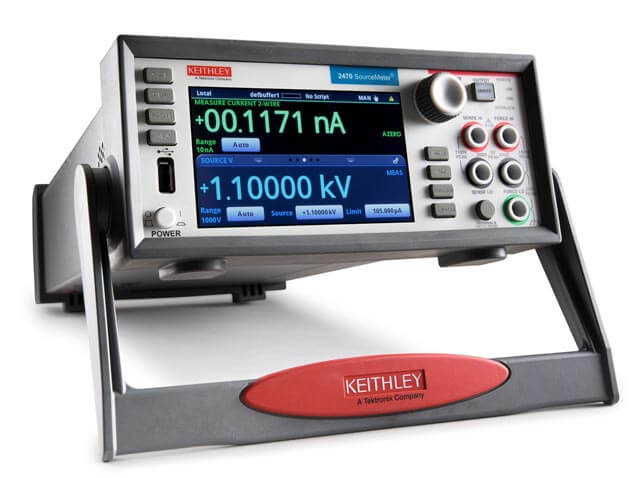Contact us
Call us at
Available 9 AM - 5 PM SST Business Days
Download
Download Manuals, Datasheets, Software and more:
Feedback
The Role of I-V Measurement in Wide Bandgap Semiconductor Testing
The characterization of intrinsic variables (IV) is crucial for developing wide bandgap semiconductors. These semiconductors, which have superior electrical properties compared to traditional materials, have a wide range of potential applications in power electronics. Understanding the I-V characteristics of these materials will allow for their optimal use and development.
Advanced I-V Characterization Techniques for Efficient Designs

Silicon Carbide and Gallium Nitride demand for 5G, automotive, and energy systems is rising
Learn More:
Are You Making the Big 'Power' Switch to SiC and GaN?
New High Power Semiconductor Devices are Pushing Instrumentation to Extremes
How SiC and GaN are changing the industry
ISiC and GaN are being used in a wide range of applications, including power electronics, high-frequency electronics, LEDs, and aerospace and defense. They are enabling the development of more efficient and advanced technologies in these fields, and are driving innovation and progress.
Pulsed I-V Characterization
Pulsed I-V is a useful technique for measuring the electrical properties of semiconductors and devices. By applying short voltage pulses, we can analyze the device's resistance, capacitance, and other performance indicators. This technique is valuable for device engineers, researchers, and designers in the power semiconductor industry to develop advanced and efficient electronics.
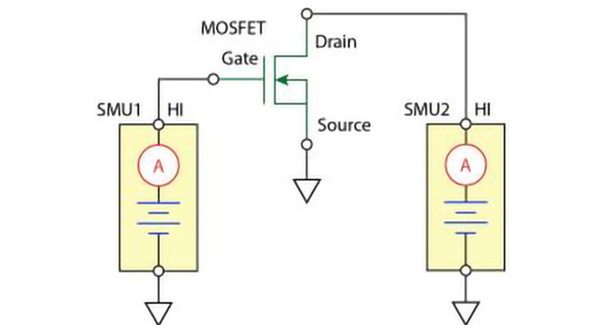
Circuit diagram showing a two-channel SMU in use for I-V characterization of a MOSFET.
Learn More:
Pulsed I-V Characterization of MOSFETs Using Keithley KickStart Software
Tips and Techniques for Efficient DC Testing and Current-Voltage Characterization
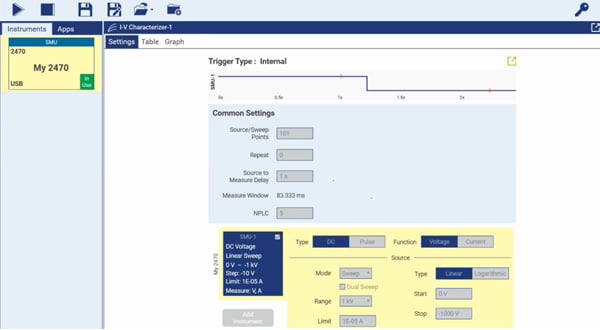
Reverse breakdown voltage test using Keithley KickStart Software and a 2470 High Voltage SourceMeter® Source Measure Unit (SMU).
Learn More:
Reverse Breakdown Voltage Test Demo
2470 Breakdown and Leakage Current Measurements on High Voltage Semiconductor Devices
Evaluate Breakdown Voltage to Ensure Reliability
Testing for breakdown voltage typically involves subjecting a device to increasing voltage levels until it experiences a breakdown in its electrical insulation properties. The breakdown voltage can be measured using specialized test equipment and procedures, and may depend on a variety of factors such as the material's properties, its thickness, and the geometry of the device.
Testing for breakdown voltage is an important procedure for ensuring the reliability and performance of electrical and electronic devices.
Explore and Measure the Family of Curves
The family of curves is an essential concept in engineering that plays a crucial role in designing and analyzing complex systems. These curves are a group of graphical solutions that share similar characteristics and functional relationships between their parameters. Engineers use these curves to understand the behavior of a system under different conditions, such as load, stress, temperature, and pressure. They also employ them to optimize the performance of industrial processes by selecting the best design parameters. From electrical to mechanical engineering, the family of curves is an indispensable tool that helps engineers make informed decisions and create efficient solutions.
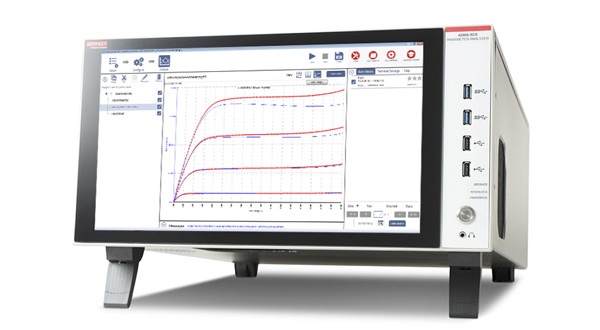
4200A-SCS Parameter Analyzer measuring I-V curves.
Learn More:
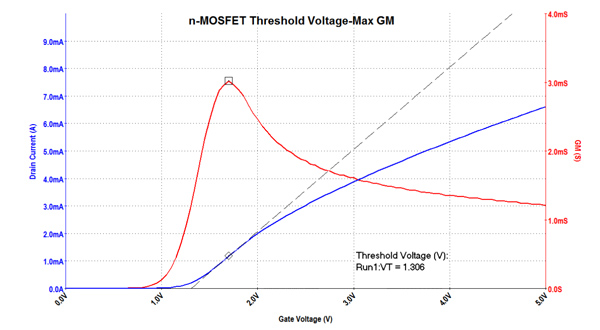
4200A-SCS Parameter Analyzer displaying MOSFET threshold voltage.
Learn More:
Top 7 Characterization Tests for MOSFETs
Tips and Techniques to Simplify MOSFET-MOSCAP Device Characterization
Switch and Amplify Circuits Easily with MOSFETs
MOSFETs, or Metal-Oxide-Semiconductor Field-Effect Transistors, are one of the most commonly used electronic components in modern engineering design. MOSFETs have revolutionized electronics engineering by being highly efficient and versatile enabling smaller and more efficient circuits, which are essential in modern-day electronics. While they have become essential in today's electronics, it is crucial to accurately measure MOSFETs. Measuring MOSFETs usually involves determining their electrical characteristics, such as resistance, capacitance, and current-voltage (I-V) curves. Engineers use various techniques and instruments to measure MOSFETs' performance, which allows them to optimize circuit designs and ensure reliable operation.



